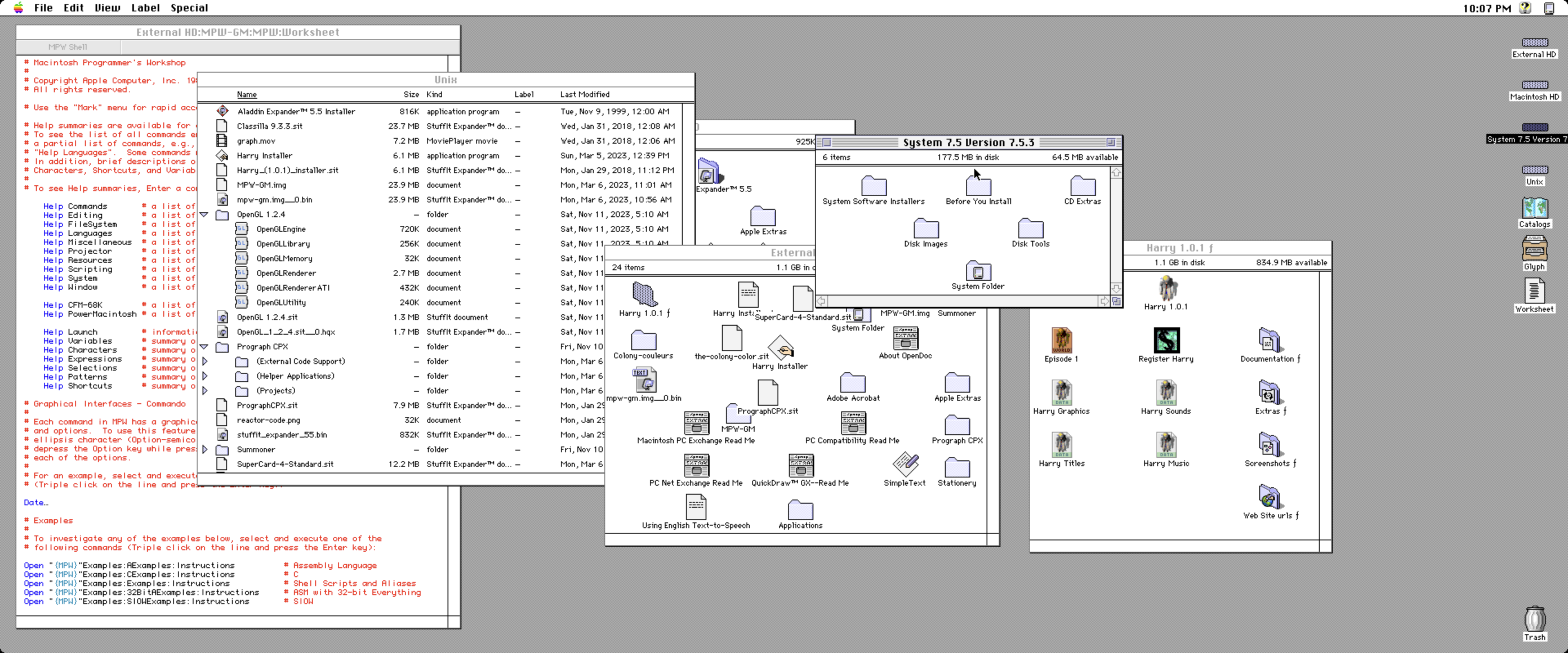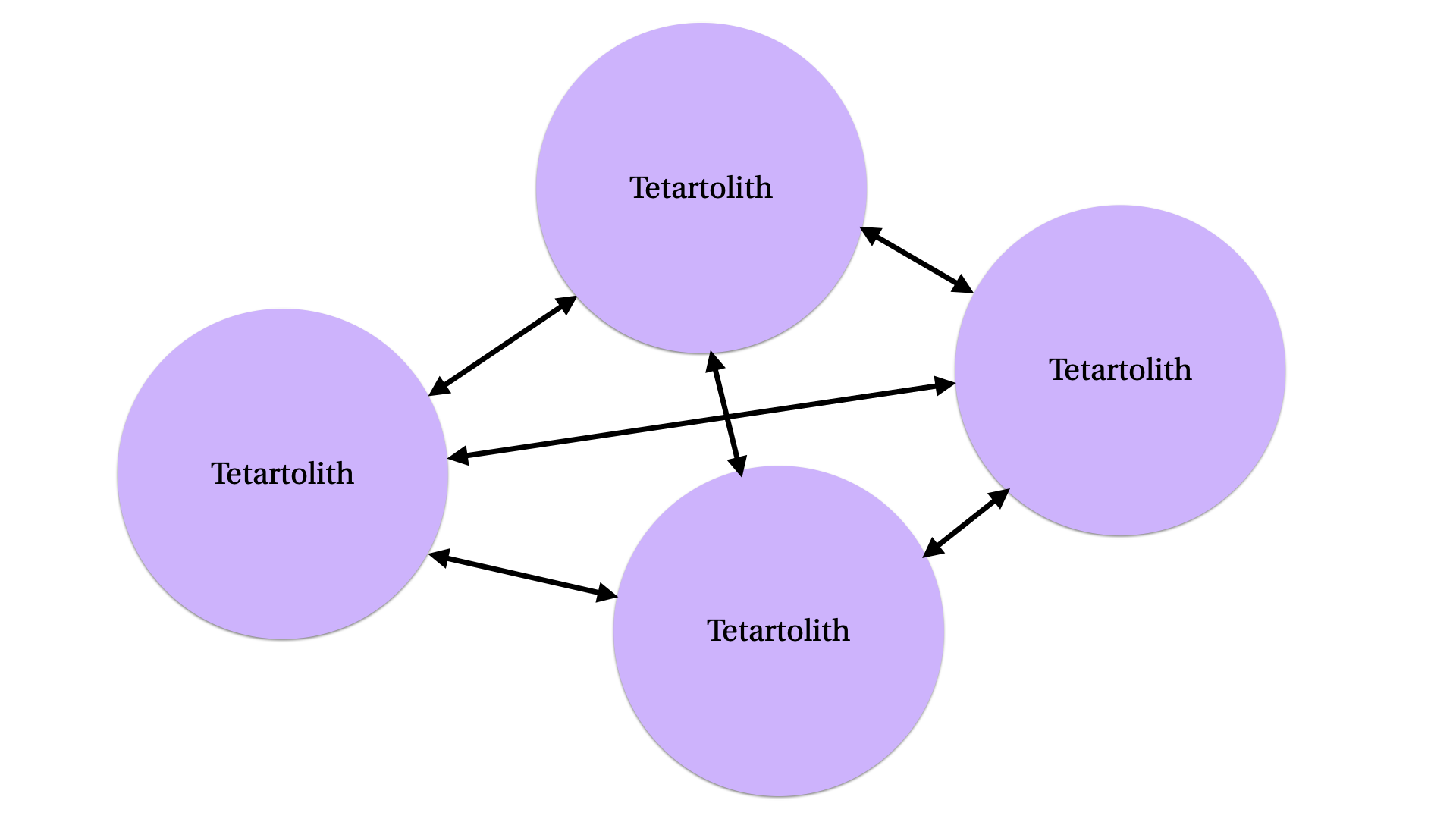The most optimistic vision of generative AI1 is that it will relieve us of the tedious, repetitive elements of knowledge work so that we can get to work on the really interesting problems that such tedium stands in the way of. Even if you fully believe in this vision, it’s hard to deny that today, some tedium is associated with the process of using generative AI itself.
Generative AI also isn’t free, and so, as responsible consumers, we need to ask: is it worth it? What’s the ROI of genAI, and how can we tell? In this post, I’d like to explore a logical framework for evaluating genAI expenditures, to determine if your organization is getting its money’s worth.
Perpetually Proffering Permuted Prompts
I think most LLM users would agree with me that a typical workflow with an LLM rarely involves prompting it only one time and getting a perfectly useful answer that solves the whole problem.
Generative AI best practices, even from the most optimistic vendors all suggest that you should continuously evaluate everything. ChatGPT, which is really the only genAI product with significantly scaled adoption, still says at the bottom of every interaction:
ChatGPT can make mistakes. Check important info.
If we have to “check important info” on every interaction, it stands to reason that even if we think it’s useful, some of those checks will find an error. Again, if we think it’s useful, presumably the next thing to do is to perturb our prompt somehow, and issue it again, in the hopes that the next invocation will, by dint of either:
- better luck this time with the stochastic aspect of the inference process,
- enhanced application of our skill to engineer a better prompt based on the deficiencies of the current inference, or
- better performance of the model by populating additional context in subsequent chained prompts.
Unfortunately, given the relative lack of reliable methods to re-generate the prompt and receive a better answer2, checking the output and re-prompting the model can feel like just kinda futzing around with it. You try, you get a wrong answer, you try a few more times, eventually you get the right answer that you wanted in the first place. It’s a somewhat unsatisfying process, but if you get the right answer eventually, it does feel like progress, and you didn’t need to use up another human’s time.
In fact, the hottest buzzword of the last hype cycle is “agentic”. While I have my own feelings about this particular word3, its current practical definition is “a generative AI system which automates the process of re-prompting itself, by having a deterministic program evaluate its outputs for correctness”.
A better term for an “agentic” system would be a “self-futzing system”.
However, the ability to automate some level of checking and re-prompting does not mean that you can fully delegate tasks to an agentic tool, either. It is, plainly put, not safe. If you leave the AI on its own, you will get terrible results that will at best make for a funny story45 and at worst might end up causing serious damage67.
Taken together, this all means that for any consequential task that you want to accomplish with genAI, you need an expert human in the loop. The human must be capable of independently doing the job that the genAI system is being asked to accomplish.
When the genAI guesses correctly and produces usable output, some of the human’s time will be saved. When the genAI guesses wrong and produces hallucinatory gibberish or even “correct” output that nevertheless fails to account for some unstated but necessary property such as security or scale, some of the human’s time will be wasted evaluating it and re-trying it.
Income from Investment in Inference
Let’s evaluate an abstract, hypothetical genAI system that can automate some work for our organization. To avoid implicating any specific vendor, let’s call the system “Mallory”.
Is Mallory worth the money? How can we know?
Logically, there are only two outcomes that might result from using Mallory to do our work.
- We prompt Mallory to do some work; we check its work, it is correct, and some time is saved.
- We prompt Mallory to do some work; we check its work, it fails, and we futz around with the result; this time is wasted.
As a logical framework, this makes sense, but ROI is an arithmetical concept, not a logical one. So let’s translate this into some terms.
In order to evaluate Mallory, let’s define the Futzing Fraction, “ FF ”, in terms of the following variables:
- H
-
the average amount of time a Human worker would take to do a task, unaided by Mallory
- I
-
the amount of time that Mallory takes to run one Inference8
- C
-
the amount of time that a human has to spend Checking Mallory’s output for each inference
- P
-
the Probability that Mallory will produce a correct inference for each prompt
- W
-
the average amount of time that it takes for a human to Write one prompt for Mallory
- E
-
since we are normalizing everything to time, rather than money, we do also have to account for the dollar of Mallory as as a product, so we will include the Equivalent amount of human time we could purchase for the marginal cost of one9 inference.
As in last week’s example of simple ROI arithmetic, we will put our costs in the numerator, and our benefits in the denominator.
The idea here is that for each prompt, the minimum amount of time-equivalent cost possible is W+I+C+E. The user must, at least once, write a prompt, wait for inference to run, then check the output; and, of course, pay any costs to Mallory’s vendor.
If the probability of a correct answer is P=13, then they will do this entire process 3 times10, so we put P in the denominator. Finally, we divide everything by H, because we are trying to determine if we are actually saving any time or money, versus just letting our existing human, who has to be driving this process anyway, do the whole thing.
If the Futzing Fraction evaluates to a number greater than 1, as previously discussed, you are a bozo; you’re spending more time futzing with Mallory than getting value out of it.
Figuring out the Fraction is Frustrating
In order to even evaluate the value of the Futzing Fraction though, you have to have a sound method to even get a vague sense of all the terms.
If you are a business leader, a lot of this is relatively easy to measure. You vaguely know what H is, because you know what your payroll costs, and similarly, you can figure out E with some pretty trivial arithmetic based on Mallory’s pricing table. There are endless YouTube channels, spec sheets and benchmarks to give you I. W is probably going to be so small compared to H that it hardly merits consideration11.
But, are you measuring C? If your employees are not checking the outputs of the AI, you’re on a path to catastrophe that no ROI calculation can capture, so it had better be greater than zero.
Are you measuring P? How often does the AI get it right on the first try?
Challenges to Computing Checking Costs
In the fraction defined above, the term C is going to be large. Larger than you think.
Measuring P and C with a high degree of precision is probably going to be very hard; possibly unreasonably so, or too expensive12 to bother with in practice. So you will undoubtedly need to work with estimates and proxy metrics. But you have to be aware that this is a problem domain where your normal method of estimating is going to be extremely vulnerable to inherent cognitive bias, and find ways to measure.
Margins, Money, and Metacognition
First let’s discuss cognitive and metacognitive bias.
My favorite cognitive bias is the availability heuristic and a close second is its cousin salience bias. Humans are empirically predisposed towards noticing and remembering things that are more striking, and to overestimate their frequency.
If you are estimating the variables above based on the vibe that you’re getting from the experience of using an LLM, you may be overestimating its utility.
Consider a slot machine.
If you put a dollar in to a slot machine, and you lose that dollar, this is an unremarkable event. Expected, even. It doesn’t seem interesting. You can repeat this over and over again, a thousand times, and each time it will seem equally unremarkable. If you do it a thousand times, you will probably get gradually more anxious as your sense of your dwindling bank account becomes slowly more salient, but losing one more dollar still seems unremarkable.
If you put a dollar in a slot machine and it gives you a thousand dollars, that will probably seem pretty cool. Interesting. Memorable. You might tell a story about this happening, but you definitely wouldn’t really remember any particular time you lost one dollar.
Luckily, when you arrive at a casino with slot machines, you probably know well enough to set a hard budget in the form of some amount of physical currency you will have available to you. The odds are against you, you’ll probably lose it all, but any responsible gambler will have an immediate, physical representation of their balance in front of them, so when they have lost it all, they can see that their hands are empty, and can try to resist the “just one more pull” temptation, after hitting that limit.
Now, consider Mallory.
If you put ten minutes into writing a prompt, and Mallory gives a completely off-the-rails, useless answer, and you lose ten minutes, well, that’s just what using a computer is like sometimes. Mallory malfunctioned, or hallucinated, but it does that sometimes, everybody knows that. You only wasted ten minutes. It’s fine. Not a big deal. Let’s try it a few more times. Just ten more minutes. It’ll probably work this time.
If you put ten minutes into writing a prompt, and it completes a task that would have otherwise taken you 4 hours, that feels amazing. Like the computer is magic! An absolute endorphin rush.
Very memorable. When it happens, it feels like P=1.
But... did you have a time budget before you started? Did you have a specified N such that “I will give up on Mallory as soon as I have spent N minutes attempting to solve this problem with it”? When the jackpot finally pays out that 4 hours, did you notice that you put 6 hours worth of 10-minute prompt coins into it in?
If you are attempting to use the same sort of heuristic intuition that probably works pretty well for other business leadership decisions, Mallory’s slot-machine chat-prompt user interface is practically designed to subvert those sensibilities. Most business activities do not have nearly such an emotionally variable, intermittent reward schedule. They’re not going to trick you with this sort of cognitive illusion.
Thus far we have been talking about cognitive bias, but there is a metacognitive bias at play too: while Dunning-Kruger, everybody’s favorite metacognitive bias does have some problems with it, the main underlying metacognitive bias is that we tend to believe our own thoughts and perceptions, and it requires active effort to distance ourselves from them, even if we know they might be wrong.
This means you must assume any intuitive estimate of C is going to be biased low; similarly P is going to be biased high. You will forget the time you spent checking, and you will underestimate the number of times you had to re-check.
To avoid this, you will need to decide on a Ulysses pact to provide some inputs to a calculation for these factors that you will not be able to able to fudge if they seem wrong to you.
Problematically Plausible Presentation
Another nasty little cognitive-bias landmine for you to watch out for is the authority bias, for two reasons:
- People will tend to see Mallory as an unbiased, external authority, and thereby see it as more of an authority than a similarly-situated human13.
- Being an LLM, Mallory will be overconfident in its answers14.
The nature of LLM training is also such that commonly co-occurring tokens in the training corpus produce higher likelihood of co-occurring in the output; they’re just going to be closer together in the vector-space of the weights; that’s, like, what training a model is, establishing those relationships.
If you’ve ever used an heuristic to informally evaluate someone’s credibility by listening for industry-specific shibboleths or ways of describing a particular issue, that skill is now useless. Having ingested every industry’s expert literature, commonly-occurring phrases will always be present in Mallory’s output. Mallory will usually sound like an expert, but then make mistakes at random.15.
While you might intuitively estimate C by thinking “well, if I asked a person, how could I check that they were correct, and how long would that take?” that estimate will be extremely optimistic, because the heuristic techniques you would use to quickly evaluate incorrect information from other humans will fail with Mallory. You need to go all the way back to primary sources and actually fully verify the output every time, or you will likely fall into one of these traps.
Mallory Mangling Mentorship
So far, I’ve been describing the effect Mallory will have in the context of an individual attempting to get some work done. If we are considering organization-wide adoption of Mallory, however, we must also consider the impact on team dynamics. There are a number of possible potential side effects that one might consider when looking at, but here I will focus on just one that I have observed.
I have a cohort of friends in the software industry, most of whom are individual contributors. I’m a programmer who likes programming, so are most of my friends, and we are also (sigh), charitably, pretty solidly middle-aged at this point, so we tend to have a lot of experience.
As such, we are often the folks that the team — or, in my case, the community — goes to when less-experienced folks need answers.
On its own, this is actually pretty great. Answering questions from more junior folks is one of the best parts of a software development job. It’s an opportunity to be helpful, mostly just by knowing a thing we already knew. And it’s an opportunity to help someone else improve their own agency by giving them knowledge that they can use in the future.
However, generative AI throws a bit of a wrench into the mix.
Let’s imagine a scenario where we have 2 developers: Alice, a staff engineer who has a good understanding of the system being built, and Bob, a relatively junior engineer who is still onboarding.
The traditional interaction between Alice and Bob, when Bob has a question, goes like this:
- Bob gets confused about something in the system being developed, because Bob’s understanding of the system is incorrect.
- Bob formulates a question based on this confusion.
- Bob asks Alice that question.
- Alice knows the system, so she gives an answer which accurately reflects the state of the system to Bob.
- Bob’s understanding of the system improves, and thus he will have fewer and better-informed questions going forward.
You can imagine how repeating this simple 5-step process will eventually transform Bob into a senior developer, and then he can start answering questions on his own. Making sufficient time for regularly iterating this loop is the heart of any good mentorship process.
Now, though, with Mallory in the mix, the process now has a new decision point, changing it from a linear sequence to a flow chart.
We begin the same way, with steps 1 and 2. Bob’s confused, Bob formulates a question, but then:
- Bob asks Mallory that question.
Here, our path then diverges into a “happy” path, a “meh” path, and a “sad” path.
The “happy” path proceeds like so:
- Mallory happens to formulate a correct answer.
- Bob’s understanding of the system improves, and thus he will have fewer and better-informed questions going forward.
Great. Problem solved. We just saved some of Alice’s time. But as we learned earlier,
Mallory can make mistakes. When that happens, we will need to check important info. So let’s get checking:
- Mallory happens to formulate an incorrect answer.
- Bob investigates this answer.
- Bob realizes that this answer is incorrect because it is inconsistent with some of his prior, correct knowledge of the system, or his investigation.
- Bob asks Alice the same question; GOTO traditional interaction step 4.
On this path, Bob spent a while futzing around with Mallory, to no particular benefit. This wastes some of Bob’s time, but then again, Bob could have ended up on the happy path, so perhaps it was worth the risk; at least Bob wasn’t wasting any of Alice’s much more valuable time in the process.16
Notice that beginning at the start of step 4, we must begin allocating all of Bob’s time to C, so C already starts getting a bit bigger than if it were just Bob checking Mallory’s output specifically on tasks that Bob is doing.
That brings us to the “sad” path.
- Mallory happens to formulate an incorrect answer.
- Bob investigates this answer.
- Bob does not realize that this answer is incorrect because he is unable to recognize any inconsistencies with his existing, incomplete knowledge of the system.
- Bob integrates Mallory’s incorrect information of the system into his mental model.
- Bob proceeds to make a larger and larger mess of his work, based on an incorrect mental model.
- Eventually, Bob asks Alice a new, worse question, based on this incorrect understanding.
- Sadly we cannot return to the happy path at this point, because now Alice must unravel the complex series of confusing misunderstandings that Mallory has unfortunately conveyed to Bob at this point. In the really sad case, Bob actually doesn’t believe Alice for a while, because Mallory seems unbiased17, and Alice has to waste even more time convincing Bob before she can simply explain to him.
Now, we have wasted some of Bob’s time, and some of Alice’s time. Everything from step 5-10 is C, and as soon as Alice gets involved, we are now adding to C at double real-time. If more team members are pulled in to the investigation, you are now multiplying C by the number of investigators, potentially running at triple or quadruple real time.
But That’s Not All
Here I’ve presented a brief selection reasons why C will be both large, and larger than you expect. To review:
- Gambling-style mechanics of the user interface will interfere with your own self-monitoring and developing a good estimate.
- You can’t use human heuristics for quickly spotting bad answers.
- Wrong answers given to junior people who can’t evaluate them will waste more time from your more senior employees.
But this is a small selection of ways that Mallory’s output can cost you money and time. It’s harder to simplistically model second-order effects like this, but there’s also a broad range of possibilities for ways that, rather than simply checking and catching errors, an error slips through and starts doing damage. Or ways in which the output isn’t exactly wrong, but still sub-optimal in ways which can be difficult to notice in the short term.
For example, you might successfully vibe-code your way to launch a series of applications, successfully “checking” the output along the way, but then discover that the resulting code is unmaintainable garbage that prevents future feature delivery, and needs to be re-written18. But this kind of intellectual debt isn’t even specific to technical debt while coding; it can even affect such apparently genAI-amenable fields as LinkedIn content marketing19.
Problems with the Prediction of P
C isn’t the only challenging term though. P, is just as, if not more important, and just as hard to measure.
LLM marketing materials love to phrase their accuracy in terms of a percentage. Accuracy claims for LLMs in general tend to hover around 70%20. But these scores vary per field, and when you aggregate them across multiple topic areas, they start to trend down. This is exactly why “agentic” approaches for more immediately-verifiable LLM outputs (with checks like “did the code work”) got popular in the first place: you need to try more than once.
Independently measured claims about accuracy tend to be quite a bit lower21. The field of AI benchmarks is exploding, but it probably goes without saying that LLM vendors game those benchmarks22, because of course every incentive would encourage them to do that. Regardless of what their arbitrary scoring on some benchmark might say, all that matters to your business is whether it is accurate for the problems you are solving, for the way that you use it. Which is not necessarily going to correspond to any benchmark. You will need to measure it for yourself.
With that goal in mind, our formulation of P must be a somewhat harsher standard than “accuracy”. It’s not merely “was the factual information contained in any generated output accurate”, but, “is the output good enough that some given real knowledge-work task is done and the human does not need to issue another prompt”?
Surprisingly Small Space for Slip-Ups
The problem with reporting these things as percentages at all, however, is that our actual definition for P is 1attempts, where attempts for any given attempt, at least, must be an integer greater than or equal to 1.
Taken in aggregate, if we succeed on the first prompt more often than not, we could end up with a P>12, but combined with the previous observation that you almost always have to prompt it more than once, the practical reality is that P will start at 50% and go down from there.
If we plug in some numbers, trying to be as extremely optimistic as we can, and say that we have a uniform stream of tasks, every one of which can be addressed by Mallory, every one of which:
- we can measure perfectly, with no overhead
- would take a human 45 minutes
- takes Mallory only a single minute to generate a response
- Mallory will require only 1 re-prompt, so “good enough” half the time
- takes a human only 5 minutes to write a prompt for
- takes a human only 5 minutes to check the result of
- has a per-prompt cost of the equivalent of a single second of a human’s time
Thought experiments are a dicey basis for reasoning in the face of disagreements, so I have tried to formulate something here that is absolutely, comically, over-the-top stacked in favor of the AI optimist here.
Would that be a profitable? It sure seems like it, given that we are trading off 45 minutes of human time for 1 minute of Mallory-time and 10 minutes of human time. If we ask Python:
1 2 3 4 5 | |
We get a futzing fraction of about 0.4896. Not bad! Sounds like, at least under these conditions, it would indeed be cost-effective to deploy Mallory. But… realistically, do you reliably get useful, done-with-the-task quality output on the second prompt? Let’s bump up the denominator on P just a little bit there, and see how we fare:
1 2 | |
Oof. Still cost-effective at 0.734, but not quite as good. Where do we cap out, exactly?
1 2 3 4 5 6 7 8 9 | |
With this little test, we can see that at our next iteration we are already at 0.9792, and by 5 tries per prompt, even in this absolute fever-dream of an over-optimistic scenario, with a futzing fraction of 1.2240, Mallory is now a net detriment to our bottom line.
Harm to the Humans
We are treating H as functionally constant so far, an average around some hypothetical Gaussian distribution, but the distribution itself can also change over time.
Formally speaking, an increase to H would be good for our fraction. Maybe it would even be a good thing; it could mean we’re taking on harder and harder tasks due to the superpowers that Mallory has given us.
But an observed increase to H would probably not be good. An increase could also mean your humans are getting worse at solving problems, because using Mallory has atrophied their skills23 and sabotaged learning opportunities2425. It could also go up because your senior, experienced people now hate their jobs26.
For some more vulnerable folks, Mallory might just take a shortcut to all these complex interactions and drive them completely insane27 directly. Employees experiencing an intense psychotic episode are famously less productive than those who are not.
This could all be very bad, if our futzing fraction eventually does head north of 1 and you need to reconsider introducing human-only workflows, without Mallory.
Abridging the Artificial Arithmetic (Alliteratively)
To reiterate, I have proposed this fraction:
which shows us positive ROI when FF is less than 1, and negative ROI when it is more than 1.
This model is heavily simplified. A comprehensive measurement program that tests the efficacy of any technology, let alone one as complex and rapidly changing as LLMs, is more complex than could be captured in a single blog post.
Real-world work might be insufficiently uniform to fit into a closed-form solution like this. Perhaps an iterated simulation with variables based on the range of values seem from your team’s metrics would give better results.
However, in this post, I want to illustrate that if you are going to try to evaluate an LLM-based tool, you need to at least include some representation of each of these terms somewhere. They are all fundamental to the way the technology works, and if you’re not measuring them somehow, then you are flying blind into the genAI storm.
I also hope to show that a lot of existing assumptions about how benefits might be demonstrated, for example with user surveys about general impressions, or by evaluating artificial benchmark scores, are deeply flawed.
Even making what I consider to be wildly, unrealistically optimistic assumptions about these measurements, I hope I’ve shown:
- in the numerator, C might be a lot higher than you expect,
- in the denominator, P might be a lot lower than you expect,
- repeated use of an LLM might make H go up, but despite the fact that it's in the denominator, that will ultimately be quite bad for your business.
Personally, I don’t have all that many concerns about E and I. E is still seeing significant loss-leader pricing, and I might not be coming down as fast as vendors would like us to believe, if the other numbers work out I don’t think they make a huge difference. However, there might still be surprises lurking in there, and if you want to rationally evaluate the effectiveness of a model, you need to be able to measure them and incorporate them as well.
In particular, I really want to stress the importance of the influence of LLMs on your team dynamic, as that can cause massive, hidden increases to C. LLMs present opportunities for junior employees to generate an endless stream of chaff that will simultaneously:
- wreck your performance review process by making them look much more productive than they are,
- increase stress and load on senior employees who need to clean up unforeseen messes created by their LLM output,
- and ruin their own opportunities for career development by skipping over learning opportunities.
If you’ve already deployed LLM tooling without measuring these things and without updating your performance management processes to account for the strange distortions that these tools make possible, your Futzing Fraction may be much, much greater than 1, creating hidden costs and technical debt that your organization will not notice until a lot of damage has already been done.
If you got all the way here, particularly if you’re someone who is enthusiastic about these technologies, thank you for reading. I appreciate your attention and I am hopeful that if we can start paying attention to these details, perhaps we can all stop futzing around so much with this stuff and get back to doing real work.
Acknowledgments
Thank you to my patrons who are supporting my writing on this blog. If you like what you’ve read here and you’d like to read more of it, or you’d like to support my various open-source endeavors, you can support my work as a sponsor!
-
I do not share this optimism, but I want to try very hard in this particular piece to take it as a given that genAI is in fact helpful. ↩
-
If we could have a better prompt on demand via some repeatable and automatable process, surely we would have used a prompt that got the answer we wanted in the first place. ↩
-
The software idea of a “user agent” straightforwardly comes from the legal principle of an agent, which has deep roots in common law, jurisprudence, philosophy, and math. When we think of an agent (some software) acting on behalf of a principal (a human user), this historical baggage imputes some important ethical obligations to the developer of the agent software. genAI vendors have been as eager as any software vendor to dodge responsibility for faithfully representing the user’s interests even as there are some indications that at least some courts are not persuaded by this dodge, at least by the consumers of genAI attempting to pass on the responsibility all the way to end users. Perhaps it goes without saying, but I’ll say it anyway: I don’t like this newer interpretation of “agent”. ↩
-
“Vending-Bench: A Benchmark for Long-Term Coherence of Autonomous Agents”, Axel Backlund, Lukas Petersson, Feb 20, 2025 ↩
-
“random thing are happening, maxed out usage on api keys”, @leojr94 on Twitter, Mar 17, 2025 ↩
-
“New study sheds light on ChatGPT’s alarming interactions with teens” ↩
-
“Lawyers submitted bogus case law created by ChatGPT. A judge fined them $5,000”, by Larry Neumeister for the Associated Press, June 22, 2023 ↩
-
During which a human will be busy-waiting on an answer. ↩
-
Given the fluctuating pricing of these products, and fixed subscription overhead, this will obviously need to be amortized; including all the additional terms to actually convert this from your inputs is left as an exercise for the reader. ↩
-
I feel like I should emphasize explicitly here that everything is an average over repeated interactions. For example, you might observe that a particular LLM has a low probability of outputting acceptable work on the first prompt, but higher probability on subsequent prompts in the same context, such that it usually takes 4 prompts. For the purposes of this extremely simple closed-form model, we’d still consider that a P of 25%, even though a more sophisticated model, or a monte carlo simulation that sets progressive bounds on the probability, might produce more accurate values. ↩
-
No it isn’t, actually, but for the sake of argument let’s grant that it is. ↩
-
It’s worth noting that all this expensive measuring itself must be included in C until you have a solid grounding for all your metrics, but let’s optimistically leave all of that out for the sake of simplicity. ↩
-
“AI Company Poll Finds 45% of Workers Trust the Tech More Than Their Peers”, by Suzanne Blake for Newsweek, Aug 13, 2025 ↩
-
AI Chatbots Remain Overconfident — Even When They’re Wrong by Jason Bittel for the Dietrich College of Humanities and Social Sciences at Carnegie Mellon University, July 22, 2025 ↩
-
AI Mistakes Are Very Different From Human Mistakes by Bruce Schneier and Nathan E. Sanders for IEEE Spectrum, Jan 13, 2025 ↩
-
Foreshadowing is a narrative device in which a storyteller gives an advance hint of an upcoming event later in the story. ↩
-
“People are worried about the misuse of AI, but they trust it more than humans” ↩
-
“Why I stopped using AI (as a Senior Software Engineer)”, theSeniorDev YouTube channel, Jun 17, 2025 ↩
-
“I was an AI evangelist. Now I’m an AI vegan. Here’s why.”, Joe McKay for the greatchatlinkedin YouTube channel, Aug 8, 2025 ↩
-
“Study Finds That 52 Percent Of ChatGPT Answers to Programming Questions are Wrong”, by Sharon Adarlo for Futurism, May 23, 2024 ↩
-
“Off the Mark: The Pitfalls of Metrics Gaming in AI Progress Races”, by Tabrez Syed on BoxCars AI, Dec 14, 2023 ↩
-
“I tried coding with AI, I became lazy and stupid”, by Thomasorus, Aug 8, 2025 ↩
-
“How AI Changes Student Thinking: The Hidden Cognitive Risks” by Timothy Cook for Psychology Today, May 10, 2025 ↩
-
“Increased AI use linked to eroding critical thinking skills” by Justin Jackson for Phys.org, Jan 13, 2025 ↩
-
“AI could end my job — Just not the way I expected” by Manuel Artero Anguita on dev.to, Jan 27, 2025 ↩
-
“The Emerging Problem of “AI Psychosis”” by Gary Drevitch for Psychology Today, July 21, 2025. ↩





